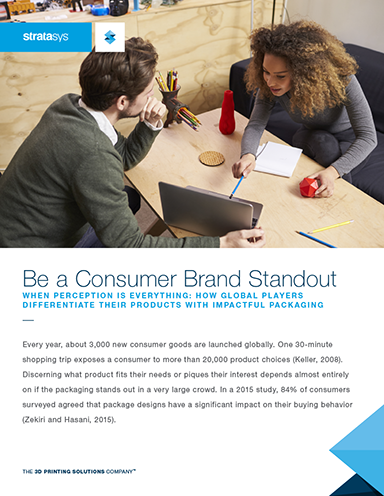How Global Players Differentiate Their Products With Impactful Packaging
Every year, about 3,000 new consumer goods are launched globally, one 30-minute shopping trip exposes a consumer to more than 20,000 product choices.

September 4, 2018
Packaging drives the way consumers experience a product, providing the right cues at the right time to prompt a sale and ensure a return buyer (S. Gangar, 2015). Successful consumer brands pull consumers in, instead of just pushing products out.
Because the look of a product’s packaging is so critical to its success, the realism of the prototype during development is not only critical to determining viability, but critical to determining the product’s true potential for success. Leading consumer brands pull buyers in by understanding which packaging design works best through extensive testing and sampling on true-to-life prototypes.
A Multi-Step Process Means Multiple Bottlenecks
Leaders in consumer brands understand the speed of concept development and time to market is critical to hitting market targets and milestones. This can be challenging because getting a product from idea to shelf takes several steps.
Producing a consumer product and its packaging typically goes through five stages of development before manufacturing, and between 10 and 100 prototypes per development cycle. This can become a cumbersome process with high costs, multiple stakeholders and drawn-out timelines when using traditional methods.
What does a traditional development process look like? Expensive and time-consuming (see the infographic for a full breakdown).
Separate systems, technologies and outside vendors are tasked with creating realistic prototypes for each stage of the development process. On average, each stage requires prototypes that cost $1,000 to $1,500 to cover the cost of labor, tooling, painting, hand finishing, machining and color matching. At that rate, one product requiring 50 prototypes during the development cycle could cost almost $75,000.
Imagine what the total prototyping cost becomes when multiple products requiring multiple packaging iterations are developed during each cycle.
Fill out the information below to download the resource.
Latest News








